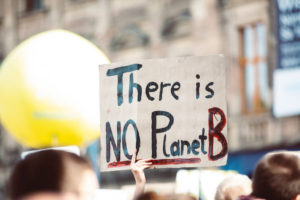What’s the Carbon Footprint of a Cup of Tea?

What’s the Carbon Footprint of a Cup of Tea?
Disclosure: This post contains affiliate links. That means that if you click on one of them and make a purchase, I may earn a commission. Thank you for your support!

According to Mike Berners-Lee in How Bad Are Bananas? The Carbon Footprint of Everything, the carbon footprint of a mug of tea is as follows:
- 23 g co2e for a black tea if you boil only as much water as you need;
- 55 g co2e if you add milk;
- 74 g co2e if you add milk and boil 2x as much water as you need (which is what most people do).
What does co2e mean?
Co2e stands for “Carbon Dioxide Equivalent.” Carbon dioxide is the main greenhouse gas causing global warming, but it is not the only one and they each have a different impact. For instance, a pound of methane causes about 25 times the impact of a pound of CO2. So a measurement called the carbon dioxide equivalent was created, and all the emissions are converted to measure their impact in terms of what amount of CO2 emissions would be equivalent.
So the way that would work is that if the production of a certain product emits 1 gram of methane, its carbon dioxide equivalent would be about 25 g co2e, since methane is about 25 times as potent a greenhouse gas. If the production of another product emitted 1 gram of methane and 20 grams of CO2, then the co2e would be about 45 g co2e.
So, Is the Carbon Footprint of Tea Bad?
Here’s the tough thing about these numbers, they’re all pretty intangible to the average person. Like, it’s obvious that adding milk or boiling extra water causes more carbon impact, but is 23 g co2e a lot? Would tea be considered a “high carbon” drink?
For comparison, we need to look at other drinks and see how our tea stacks up.
Comparison of the Carbon Footprint of Common Beverages
- A cup of black tea or coffee is about 23 g co2e (if the user heats only as much water as needed).
- A standard 330 ml can of Coke is about 170 g co2e.
- A bottle of wine is between 400 – 1,500 g co2e depending on packaging (cartons have lower impact, heavy elaborate glass bottles higher) and how far it had to travel. So assuming about 4 glasses per bottle, a glass of wine would range between 100 – 375 g co2e.
- A pint of beer is between 300 – 900 g co2e, depending on whether it’s locally brewed and served from the cask (lower impact) or bottled and imported from far away (higher impact).
- A pint of cow’s milk is 723 g co2e.
(Aside from the Coke estimate, all carbon footprint estimates taken from How Bad Are Bananas?)
Obviously this isn’t a comprehensive list of all the different kinds of drinks out there, but it allows you to see that having a cup of tea is relatively low on the carbon footprint scale compared to many other beverages.
Making a Low-Carbon Cup of Tea
Want to make your cup of tea as low in carbon emissions as possible? Here are a few easy tips:
- Skip the milk. All animal products have a high carbon footprint so if you can skip the milk or switch to a non-dairy milk like oat or soy, you can reduce your impact quite a bit.
- Only boil as much water as you need. Simply fill your mug with water, dump that into your tea kettle and heat. Saves money too!
- Buy local. The farther any product needs to travel, the higher the carbon emissions. Certain teas like black teas will be difficult to find grown locally since they mostly come from Asia, but you may be able to find herbal teas from local growers.
For more climate change articles and tips for reducing your climate impact, visit the Climate Change page.






